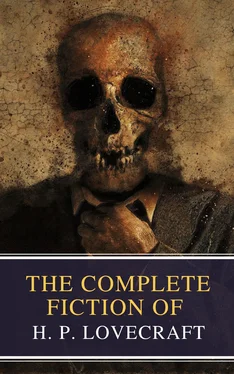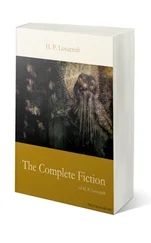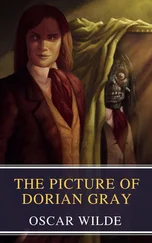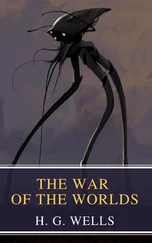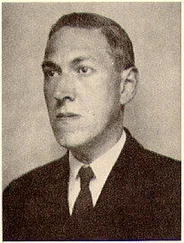That was all. After that Johansen only brooded over the idol in the cabin and attended to a few matters of food for himself and the laughing maniac by his side. He did not try to navigate after the first bold flight, for the reaction had taken something out of his soul. Then came the storm of April 2nd, and a gathering of the clouds about his consciousness. There is a sense of spectral whirling through liquid gulfs of infinity, of dizzying rides through reeling universes on a comet’s tail, and of hysterical plunges from the pit to the moon and from the moon back again to the pit, all livened by a cachinnating chorus of the distorted, hilarious elder gods and the green, bat-winged mocking imps of Tartarus.
Out of that dream came rescue—the Vigilant , the vice-admiralty court, the streets of Dunedin, and the long voyage back home to the old house by the Egeberg. He could not tell—they would think him mad. He would write of what he knew before death came, but his wife must not guess. Death would be a boon if only it could blot out the memories.
That was the document I read, and now I have placed it in the tin box beside the bas-relief and the papers of Professor Angell. With it shall go this record of mine—this test of my own sanity, wherein is pieced together that which I hope may never be pieced together again. I have looked upon all that the universe has to hold of horror, and even the skies of spring and the flowers of summer must ever afterward be poison to me. But I do not think my life will be long. As my uncle went, as poor Johansen went, so I shall go. I know too much, and the cult still lives.
Cthulhu still lives, too, I suppose, again in that chasm of stone which has shielded him since the sun was young. His accursed city is sunken once more, for the Vigilant sailed over the spot after the April storm; but his ministers on earth still bellow and prance and slay around idol-capped monoliths in lonely places. He must have been trapped by the sinking whilst within his black abyss, or else the world would by now be screaming with fright and frenzy. Who knows the end? What has risen may sink, and what has sunk may rise. Loathsomeness waits and dreams in the deep, and decay spreads over the tottering cities of men. A time will come—but I must not and cannot think! Let me pray that, if I do not survive this manuscript, my executors may put caution before audacity and see that it meets no other eye.
“Gorgons, and Hydras, and Chimaeras—dire stories of Celaeno and the Harpies—may reproduce themselves in the brain of superstition— but they were there before. They are transcripts, types—the archetypes are in us, and eternal. How else should the recital of that which we know in a waking sense to be false come to affect us at all? Is it that we naturally conceive terror from such objects, considered in their capacity of being able to inflict upon us bodily injury? O, least of all! These terrors are of older standing. They date beyond body —or without the body, they would have been the same… That the kind of fear here treated is purely spiritual—that it is strong in proportion as it is objectless on earth, that it predominates in the period of our sinless infancy—are difficulties the solution of which might afford some probable insight into our ante-mundane condition, and a peep at least into the shadowland of pre-existence.”
—Charles Lamb: “Witches and Other Night-Fears”
* * * * *
Written: August 1928
First Published in Weird Tales , Vol. 13, No. 4 (April 1929), Pages 481-508

When a traveller in north central Massachusetts takes the wrong fork at the junction of the Aylesbury pike just beyond Dean’s Corners he comes upon a lonely and curious country. The ground gets higher, and the brier-bordered stone walls press closer and closer against the ruts of the dusty, curving road. The trees of the frequent forest belts seem too large, and the wild weeds, brambles, and grasses attain a luxuriance not often found in settled regions. At the same time the planted fields appear singularly few and barren; while the sparsely scattered houses wear a surprisingly uniform aspect of age, squalor, and dilapidation. Without knowing why, one hesitates to ask directions from the gnarled, solitary figures spied now and then on crumbling doorsteps or on the sloping, rock-strown meadows. Those figures are so silent and furtive that one feels somehow confronted by forbidden things, with which it would be better to have nothing to do. When a rise in the road brings the mountains in view above the deep woods, the feeling of strange uneasiness is increased. The summits are too rounded and symmetrical to give a sense of comfort and naturalness, and sometimes the sky silhouettes with especial clearness the queer circles of tall stone pillars with which most of them are crowned.
Gorges and ravines of problematical depth intersect the way, and the crude wooden bridges always seem of dubious safety. When the road dips again there are stretches of marshland that one instinctively dislikes, and indeed almost fears at evening when unseen whippoorwills chatter and the fireflies come out in abnormal profusion to dance to the raucous, creepily insistent rhythms of stridently piping bull-frogs. The thin, shining line of the Miskatonic’s upper reaches has an oddly serpent-like suggestion as it winds close to the feet of the domed hills among which it rises.
As the hills draw nearer, one heeds their wooded sides more than their stone-crowned tops. Those sides loom up so darkly and precipitously that one wishes they would keep their distance, but there is no road by which to escape them. Across a covered bridge one sees a small village huddled between the stream and the vertical slope of Round Mountain, and wonders at the cluster of rotting gambrel roofs bespeaking an earlier architectural period than that of the neighbouring region. It is not reassuring to see, on a closer glance, that most of the houses are deserted and falling to ruin, and that the broken-steepled church now harbours the one slovenly mercantile establishment of the hamlet. One dreads to trust the tenebrous tunnel of the bridge, yet there is no way to avoid it. Once across, it is hard to prevent the impression of a faint, malign odour about the village street, as of the massed mould and decay of centuries. It is always a relief to get clear of the place, and to follow the narrow road around the base of the hills and across the level country beyond till it rejoins the Aylesbury pike. Afterward one sometimes learns that one has been through Dunwich.
Outsiders visit Dunwich as seldom as possible, and since a certain season of horror all the signboards pointing toward it have been taken down. The scenery, judged by any ordinary aesthetic canon, is more than commonly beautiful; yet there is no influx of artists or summer tourists. Two centuries ago, when talk of witch-blood, Satan-worship, and strange forest presences was not laughed at, it was the custom to give reasons for avoiding the locality. In our sensible age—since the Dunwich horror of 1928 was hushed up by those who had the town’s and the world’s welfare at heart—people shun it without knowing exactly why. Perhaps one reason—though it cannot apply to uninformed strangers—is that the natives are now repellently decadent, having gone far along that path of retrogression so common in many New England backwaters. They have come to form a race by themselves, with the well-defined mental and physical stigmata of degeneracy and inbreeding. The average of their intelligence is woefully low, whilst their annals reek of overt viciousness and of half-hidden murders, incests, and deeds of almost unnamable violence and perversity. The old gentry, representing the two or three armigerous families which came from Salem in 1692, have kept somewhat above the general level of decay; though many branches are sunk into the sordid populace so deeply that only their names remain as a key to the origin they disgrace. Some of the Whateleys and Bishops still send their eldest sons to Harvard and Miskatonic, though those sons seldom return to the mouldering gambrel roofs under which they and their ancestors were born.
Читать дальше
